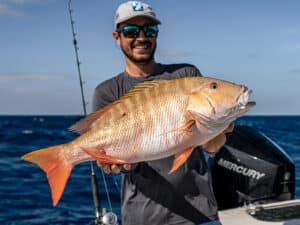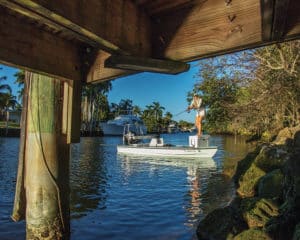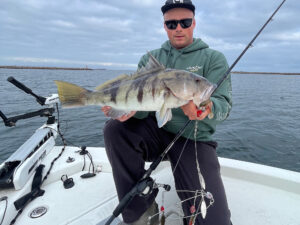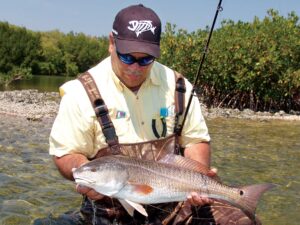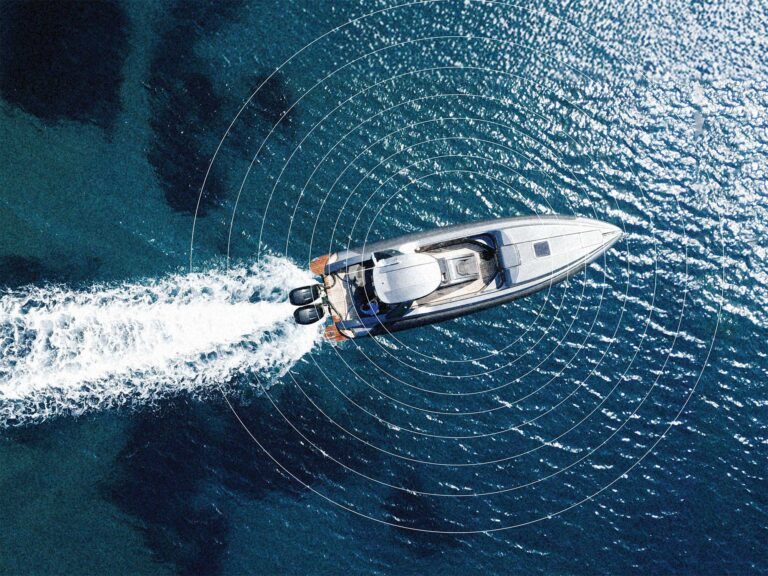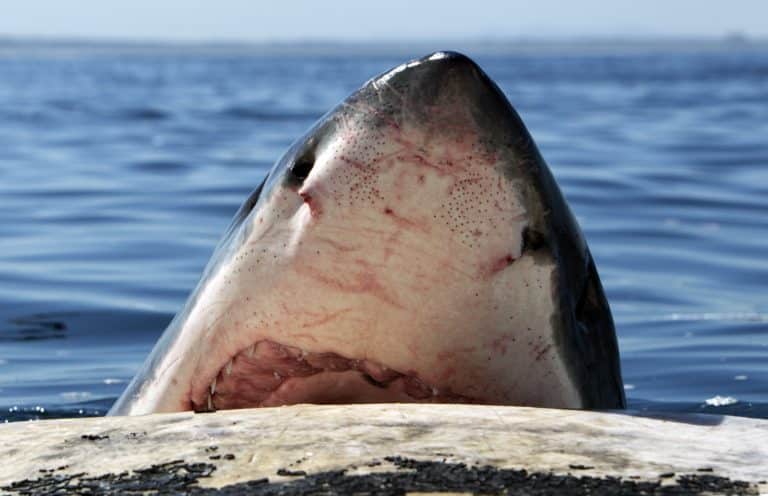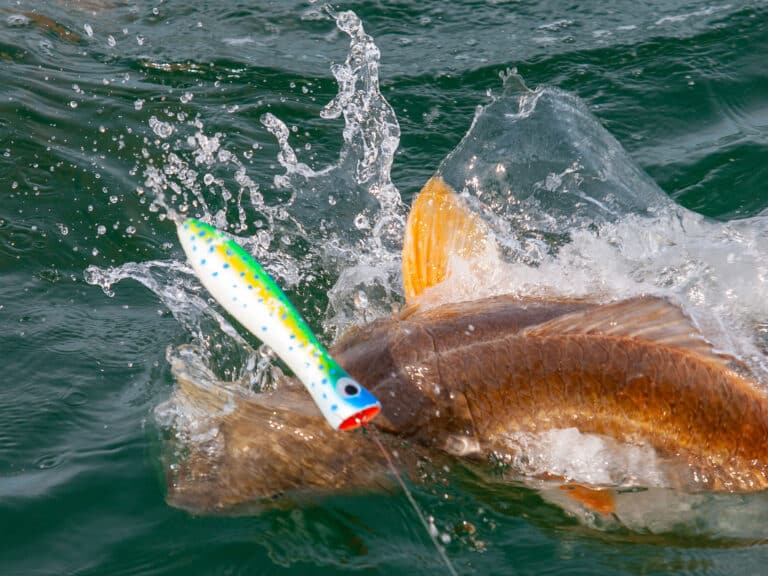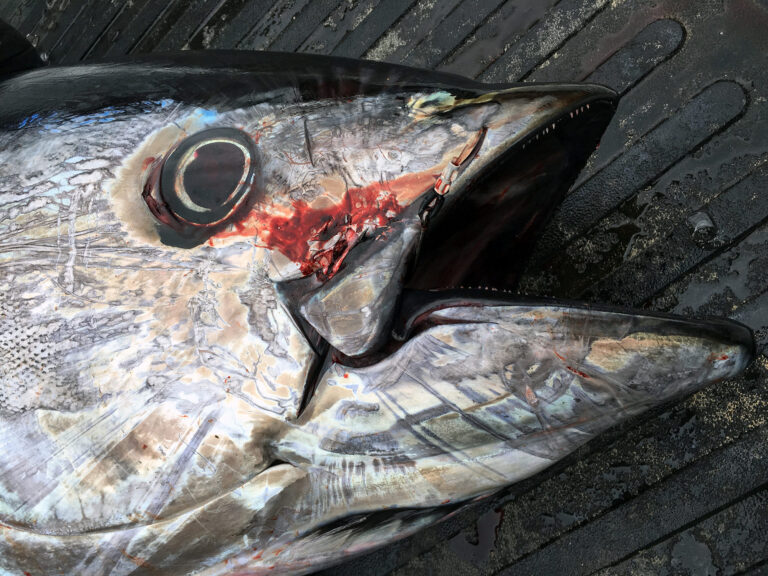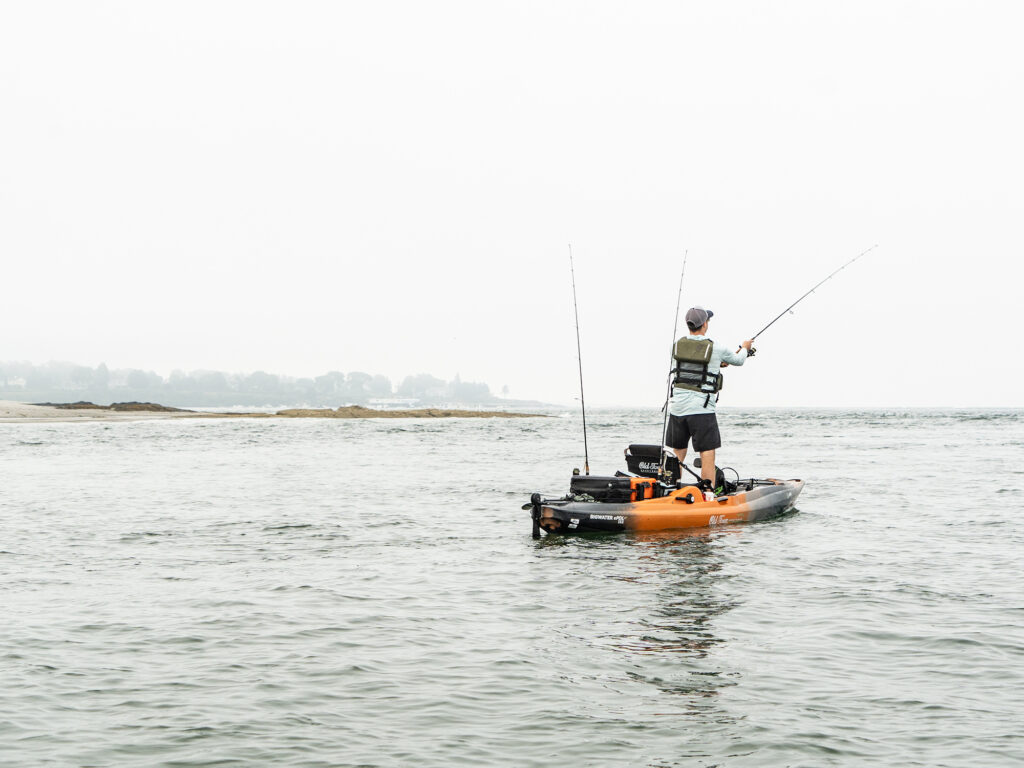
Sunup at Ferry Beach, near Scarborough, Maine, had us excited to catch striped bass. The Scarborough, Nonesuch and Libby rivers dump into the Gulf of Maine, and that’s where we wanted to be as the sun popped above the horizon. Summer warmth kept us comfortable as we launched our kayaks and headed toward the pass.
Nearby, we heard a huge splash from a mystery fish that no one was able to get eyes on. The whole group turned toward the sound. “Probably a sturgeon,” guessed nearby kayak angler Daniel McFetridge, Old Town kayaks’ e-commerce and digital marketing manager.
Fighting an incoming tide, most of us were using the ePDL+ drive that propels Old Town kayaks via a lithium battery. Of course, anglers can assist and pedal with their feet for extra power. Ryan Lilly, marketing director at Old Town, was the first one to the spot which was chock-full of underwater boulders and feeding stripers.
A strong incoming tide made the area really hard to fish. We had to hold position in the cut and make pinpoint casts. A kayak with a spot-lock trolling motor might have been able to handle it, if the motor was strong enough to stay in position in the heavy current. Maine regularly experiences 8-foot tides, with little slack tide between the rising and the falling.
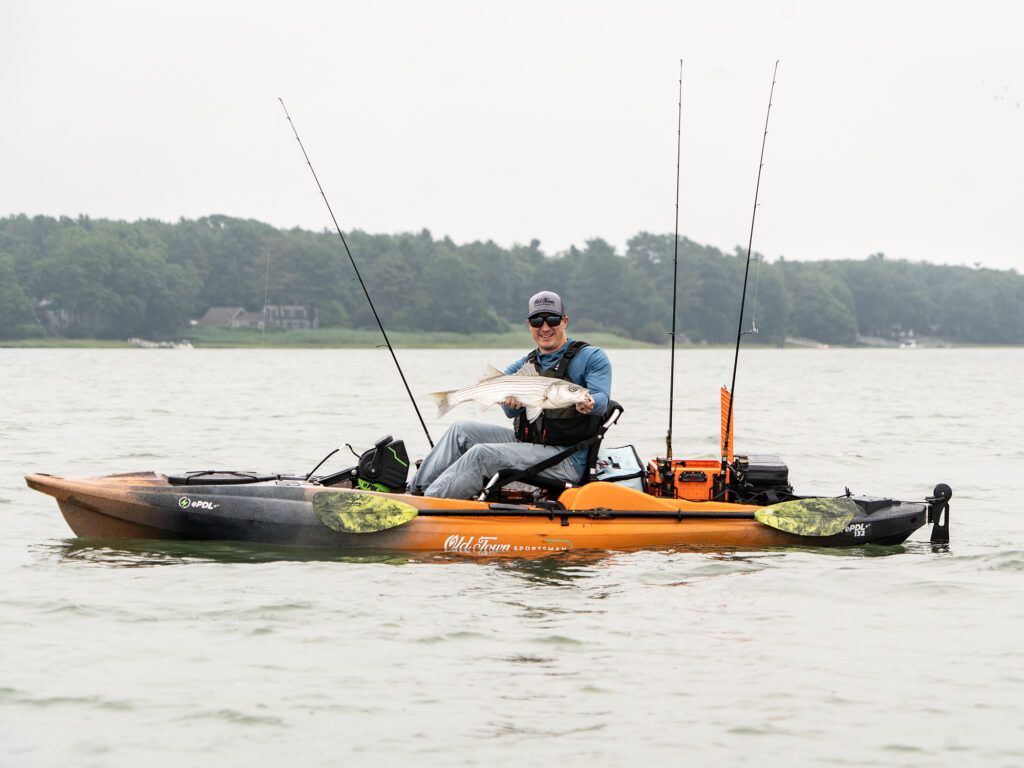
With his ePDL+ nearly at full power, Lilly locked his rudder steering in place to slice into the current. He was then able to stand up and make long casts close to shore. Prospecting with a topwater, Lilly hooked up on his third toss. And then a couple casts later.
The rest of us couldn’t replicate what he was doing. Some of us didn’t quite have the battery power to fight the current, which then required us to pedal sitting down. And sitting down meant we didn’t have enough casting distance to reach the fish. I didn’t risk moving closer to the fish, fearing I might run into submerged boulders. Soon the tide began to slow, the bite shut down, and Atlantic sturgeon were jumping around us so frequently I thought I’d become a pancake.
It was one of the most unique ways I’ve seen someone stand and fish from a kayak. Lilly obviously had experience standing in a kayak, which is necessary to fish an inlet. But I never thought I’d see standing — not sitting — kayak anglers fishing inlets and jetty rocks during a roaring tide. The experience made me think of two other instances on that recent summer trip to Maine when standing in a kayak was better than just sitting.
The Path Forward
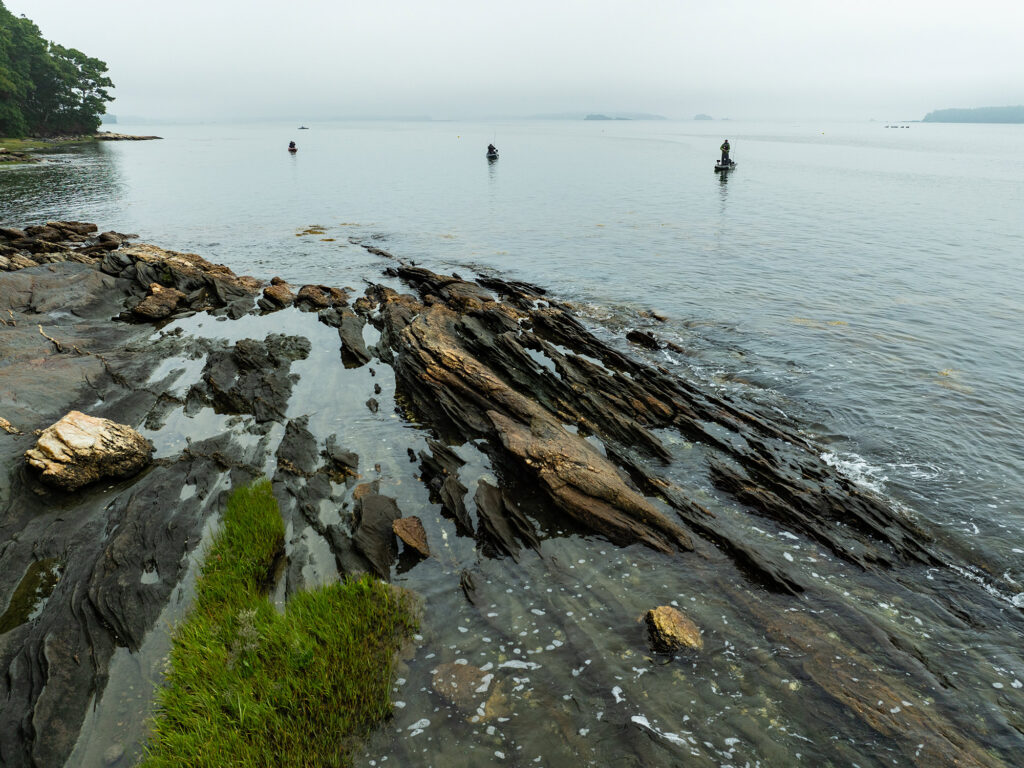
On the backside of an island in Casco Bay, Maine, we dissected a shoreline in a way that any veteran Bassmaster would appreciate. Joe Albanese, editor in chief at Wired2Fish, and I cast plugs, Z-Mans and Slug-Gos at fishy-looking grass edges and rocky shorelines in the lee of the island.
We stood in our Old Town Sportsman BigWater kayaks, recognizing the higher elevation was a huge asset in this type of fishing. In the background, gray storm clouds blew up like popcorn near the Sandy Point Bridge. We needed every bit of sunlight and height to find the spots we wanted to land our lures. Albanese struck pay dirt first when he landed a striper off some vegetation. The striped bass were definitely selective in the heart of the afternoon.
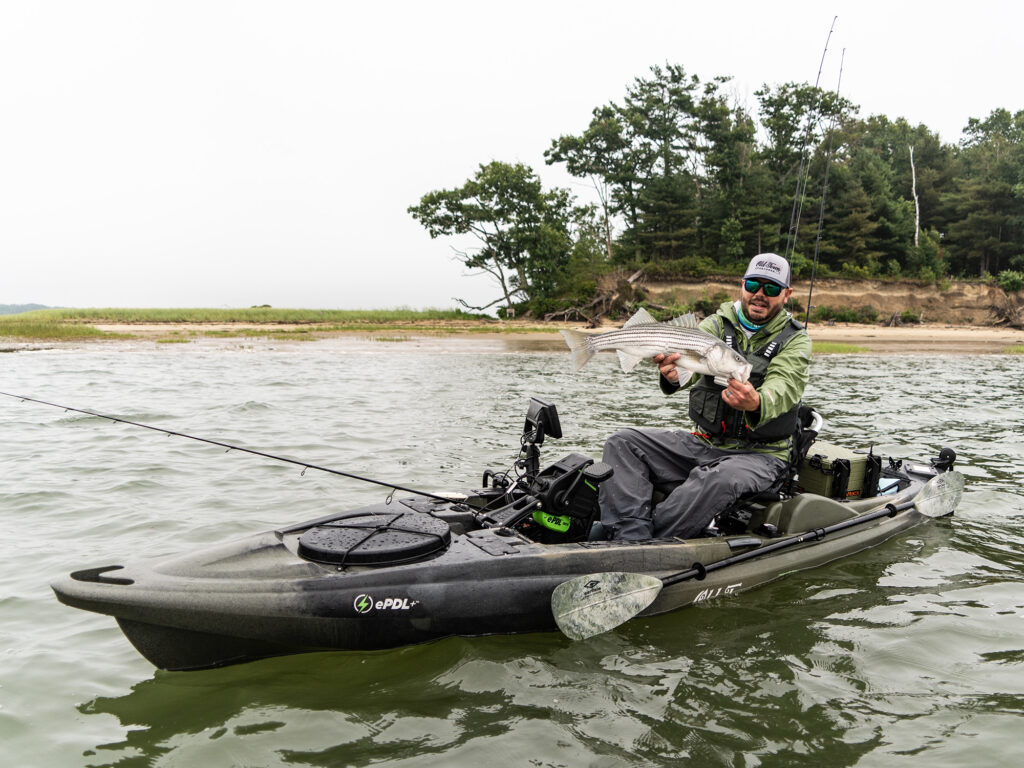
Here’s how I handled it:
- Standing in the 3-foot-wide kayak wasn’t a problem. Most wide kayaks with a wide-flat hull are plenty stable to stand up in. Standing is more of a confidence issue than anything. When you trust your footing, you don’t overcompensate and cause problems. Utilize a wide stance and loose knees to ride the swells, just like in a bigger boat. I’ve fished a ton in kayaks; be wary of kayaks that are too long-and-skinny or seemingly too lightweight for their size. Those are the ones most likely to dump you in the water while standing.
- Next, I set the ePDL+ drive on its lowest setting to slowly creep along the shoreline. Every once in a while, I had to make an adjustment to my course, but it was as simple as making a rudder correction with the hand knob.
- Finally, the other key element was skip casting. This was not as technical as casting underneath mangroves or docks, but I still used that underhand motion to land lures close to structure without making a huge splash. Executing a skip cast while sitting in a kayak isn’t easy.
Later that day, fishing a different part of the same island, we had success casting topwaters at a sandy beach and nearby shallow-water point. Out in open water, it was much less about precision casting — instead we were fan-casting a general area, looking for bait school marks on the side-scan sonar. Of course, we were standing and stretching our legs while casting.
In the Marsh
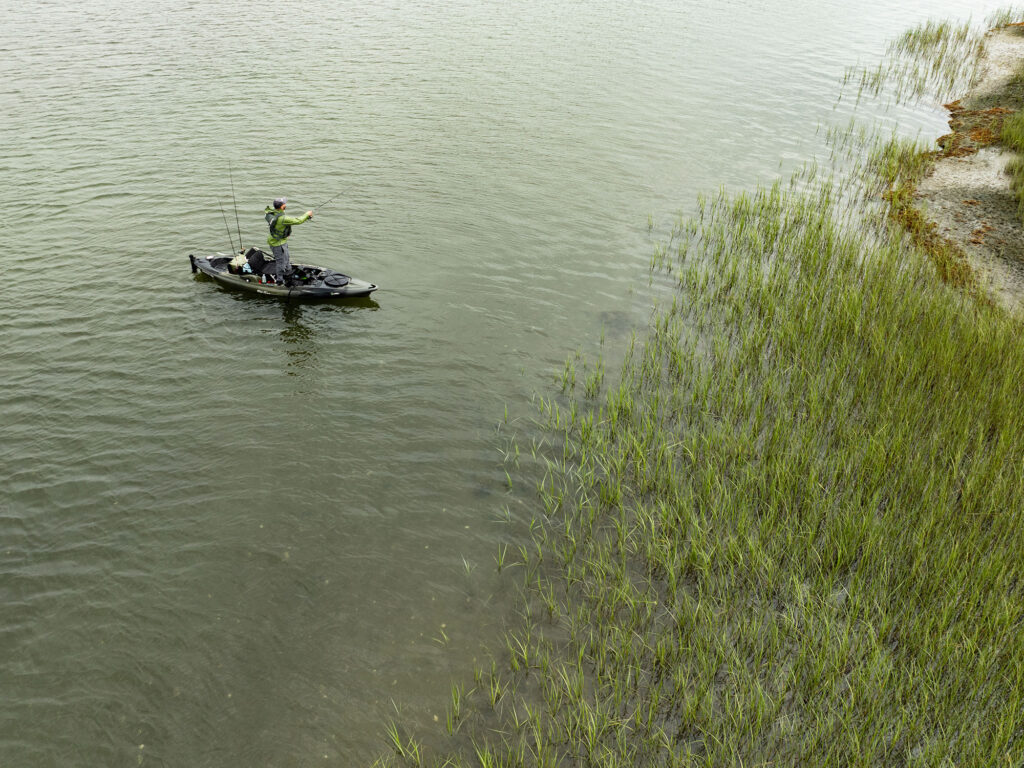
Sneaking back into the marsh was a blast. A certain type of angler from Texas to Maine really digs exploring a maze of shallow waters in search of surprisingly large gamefish. I’m that type of angler. Ideally, kayakers should allow a flood tide to push them into the labyrinth. But first, always make a stop at the entrance. That’s what we did and landed a couple striped bass off a flat. I let the current and wind drift me along a fishy stretch to maximize fishing time.
Then it was onto the creeks. We had a short window — as we were fishing the outgoing tide — before the water left the creeks entirely. I had luck with an oversize Z-Man DieZel Minnow soft plastic. It looked like a hearty baitfish, or maybe an eel. And I didn’t have to sit down to re-rig or retie. Just grab what you need and pop right back up. Even releasing smaller striped bass was easy while standing.
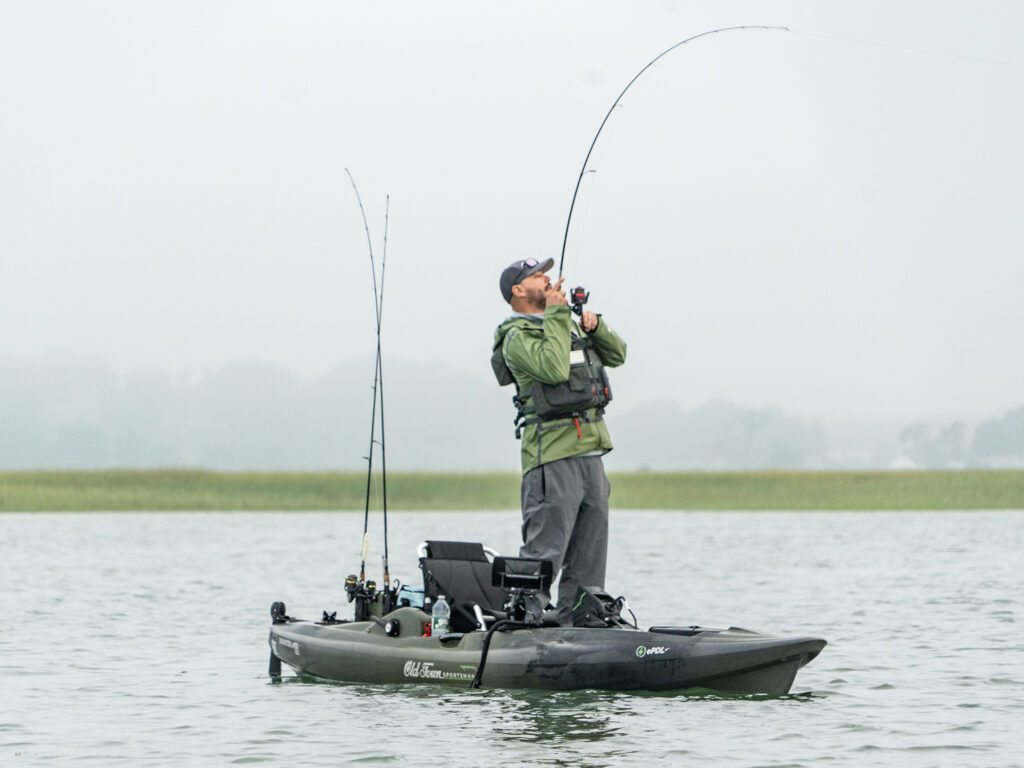
The exploration was productive. Standing in a kayak in the marsh allowed me to see what was coming next, such as a creek mouth, island or shallow flat. In many cases, we were able to look over the marsh banks and reeds to prep for the next cast, which is something you just can’t do while sitting. With the water dropping, stripers were exiting quickly in the deepest water they could find. We had to lift up our pedal drives to float out, paddling over the shallowest points.
Standing in a kayak takes getting used to, but most anglers become comfortable quickly. Start with a quality kayak in shallow water, and work your way up. Soon enough you’ll be fishing moving water in passes and inlets with the best of them.

